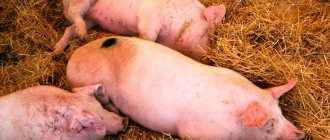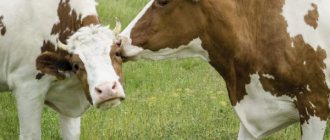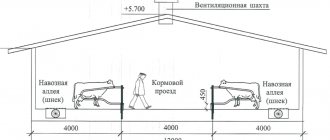How many days does it take for a chick to be born?
It takes 21 days for a chick to fully form and be born . It doesn’t matter whether the chicks are hatched under a hen or in an incubator, the process of their formation in the egg will take the same time.
Intervention on the part of the breeder should be minimal, since if you frequently disturb the chicken or open the incubator, hypothermia of the eggs will occur and, as a result, the death of the embryos.
The entire process of development of the embryo in the egg is divided into 4 stages.
- The first (days 1–7) is the formation of the circulatory system and heart, the formation of the rudiments of all internal organs.
- The second (8–14 days) is the formation of skeletal and beak bones.
- Third (15–18 days) – the appearance of motor activity and the ability to make sounds (the eggs begin to squeak).
- The fourth (19–21 days) is the final formation of the embryo and exit from the egg.
When hatching chickens in an incubator, chicks may appear not on day 21, but a little later due to an error with the temperature and its slight underestimation.
In such a situation, the embryo takes a little longer to form, and the chick turns out to be weak. When chickens raise young animals, there is no error in temperature, and the chicks appear strictly after 3 weeks.
The hen accurately determines whether the embryo is alive and throws eggs from the nest that are not suitable for further hatching. During artificial incubation, this is done by ovoscoping , during which the condition of the embryo is determined. If it dies, the egg is thrown away.
How long does it take for a chicken to hatch from an egg?
To get healthy chickens, choose fresh, medium-sized eggs for laying. Check carefully for cracks and dents. The protective shell must be intact.
The incubation period, provided the correct humidity and temperature is maintained, is no more than 25 days.
Before hatching, the embryo goes through 4 phases of development, which have their own characteristics.
- Stage 1 (from 1 to 7 days) . The process of cell division occurs, the first blood vessels appear, which then form a mesh, a protective membrane and a heart are formed. The yolk sac and head begin to form, the rudiments of the legs and eyes begin to form, and the supraclavicular tubercle appears. The weight of the embryo during this period reaches 2 g, and the height – up to 2 cm.
- Stage 2 (from 8 to 14 days). The embryo becomes like a real chicken. The whole body is covered with down. You can already see where the chicken is and where the rooster is. Height – 4.5 cm.
- Stage 3 (15-18 days). The water in the egg is used up, so is the white, and nutrition comes through the yolk. Nostrils appeared, claws and scales formed on them. The blood vessels gradually dry out. Height – 7 cm, weight – 20 g.
- Stage 4 (19-21 days). The chicken is fully formed. It begins to open its eyes, move and squeak. At hatching, height is 8 cm, weight is from 35 g.
With slight changes in heating temperature, the chicks will hatch on the 25th day. If the eggs do not hatch during this time, then the embryos have stopped developing.
Important! Delayed hatching most often occurs in the incubator.
Signs of impending hatching
The first signs that the hatching date is approaching appear on the 19th day. In rare cases, if the incubation temperature was too high, the chick may make itself known on the 17th day.
The following phenomena indicate that chickens at home are ready to hatch:
- a quiet knocking sound in the egg - you can hear it if you bring it to your ear. It means that the chicken has begun to break through the shell in the center of the egg;
- a quiet squeak - you can also hear it if you put the egg to your ear. It is an indicator that the chick is fully formed;
- movement of the egg - it, lying on a flat surface, sways from side to side from time to time, which indicates that the chick inside it is moving.
3 days before hatching, the eggs in the incubator stop being turned so that the chicken can take a comfortable position for emerging from the egg.
Beginners are interested in how many days after the first signs the chick will appear. According to the norm, it should begin hatching within a day, but everything is individual: sometimes chickens can behave completely quietly until the moment they break through the shell; and sometimes - show all signs of their presence 4-5 days before they begin to hatch. It is still best to focus on the temporary incubation indicators.
Hatched chicks
After chickens are hatched in an incubator at home, they need proper care. You can move them to a separate block while they grow up, in which all conditions will be correctly observed. In order to raise chickens at home after an incubator, you must:
- On the first day after pecking the shell, the young animals require lighting for 24 hours. Gradually, the duration of daylight hours decreases until it begins to be about 10 hours.
- In order for the chickens not to die from low temperatures, care will have to be taken to maintain optimal temperature conditions in the block or box where they were placed after the incubator. In order not to spend money on heaters, you can place a heating pad filled with warm water and wrapped in woolen fabric in a box. The only inconvenience of such a heater is constant control over the temperature of the water in the heating pad, which regularly needs to be filled with warm water. The temperature level required in order to hatch young animals and prevent their death, for chickens that are 5 days after pecking the shell, it is necessary to maintain the temperature at 29 - 33 degrees, from 5 to 10 days - 26 degrees. After this, the temperature gradually decreases every 7 days after hatching the chickens in the incubator by 3 - 4 degrees. The first time the temperature can be left unchanged when it is at 17 degrees.
After the incubation, chickens need to be fed properly. This way they will gain weight and the percentage of their death will decrease.
This issue should be given due attention, because the first complementary foods should be balanced. You can feed young animals correctly using special starter feeds, which contain all the necessary elements and vitamins.
You should also make sure that young animals always have access to clean water.
In addition to starter feeds, you can feed young animals correctly, in a balanced manner, and provide them with all the necessary vitamins using available feeds, for example:
- Protein feeds, which include cottage cheese and dairy products, as well as meat, fish waste, and peas. The most suitable period for introducing protein feed into the diet of young animals is the 5th day after hatching.
- Grain, such as wheat, oats, rye or corn.
- From the 5th day after the young animals are hatched, it is allowed to introduce mineral supplements, in particular, chalk, ash, and salt.
- Carrots or pumpkin, hay, contain many vitamins, so their presence in the diet should be mandatory.
- Chickens can be fed greens - dandelion leaves, nettles, clover.
In order to hatch chickens in an incubator, you will need to make some effort, spend time and effort. But, if all the recommendations were taken into account, and after hatching they were properly cared for, the temperature in the box was observed, the correct lighting and diet were observed, then the young animals will grow and get stronger.
You can choose the most suitable incubator for hatching chickens here.
Chick emergence process
Hatching chickens in an incubator
The breeder needs to know how chickens hatch, otherwise he will not be able to fully control the process.
Usually the chick emerges within 2–3 hours, however, for some, liberation from the shell takes longer.
The chicken hatches thanks to a special egg tooth, which is located at the end of the beak and falls off either immediately after birth or a few days after it.
The hatching of chickens has the following sequence:
- a crack in the shell from which a distinct squeak is heard indicates that the chicken has hatched;
- the formation of a small hole in the shell from which the beak peeks out;
- enlarging the hole in the egg in its center and stretching it in length like a belt;
- breaking of the shell - at this moment the chicken hatches, completely freeing itself from the shell;
- separation of the flagellum from the shell, which drags behind the chicken.
The entire process of hatching a chicken takes several hours, but it happens that a day passes from the moment the chicks hatch until they emerge from the shell. This is also considered the norm, but only if the bird does not lose activity, squeaks and reacts to a gentle touch on the beak. You should not interfere with the process at this time, as it can only cause harm.
The hatching process must be controlled in order to promptly remove the chicks from the incubator and transplant them into a special cage for drying. If this is not done, they, being active, can move eggs from which the chicks have not yet hatched, which will make it difficult for the remaining babies to emerge.
Hatching chicks under a hen
Chicks can appear during the day or at night with equal probability. Some breeders say that they have learned to lay eggs for incubation in such a way that the chicks begin to hatch at a time convenient for them (the owners). This phenomenon can still be called an accident rather than a skill. It is impossible to determine with an accuracy of an hour how long incubation will take; and therefore the date of appearance of the young can only be approximate.
Stages of embryo development
There are two ways to hatch chickens: in an incubator and naturally (the chicken incubates). The total ripening period in both cases is from 20 to 25 days. If the 26th day passes, hatching will not take place: the embryo has died in the egg. Moreover, in conditions of sufficient heating, the birth period will be no more than 20-21 days, and if the temperature at times was not high enough, delays of several days are likely. Thus, the maturation rate for a chicken is 3 weeks.
The entire process of formation of an embryo from the yolk and white of an egg is divided into 3 stages:
- up to 5 days;
- from 6 to 20 days;
- day of hatching.
First 5 days
During this period, not only does an embryo form from a simple, familiar egg, consisting of white and yolk, but it also begins to breathe atmospheric air accumulating in the cavity of the egg. Experiments on growing a chicken from an egg with the shell removed in a Petri dish made it possible to see the whole process live:
| Description | Photo |
| On the first day, cell division processes begin in the center of the egg: they are the ones that will soon give rise to the embryo. The photo shows the so-called germinal disc - it is from this that the embryo is formed. | |
| Already on the second day, a web of blood vessels and the amnion appears - this is a transparent sac, a “shirt” around the embryo. It prevents the death of the embryo from possible sharp blows and jolts. | |
| On the third day, the formation of the head is visible; the folds of the amnion join together - it turns into a single membrane. | |
| On the 4th day, the eyes and future legs of the chicken are already visible; it reaches a length of 8-9 mm. | |
| On the 5th day, the embryo sharply increases in length (2 times) and begins to breathe atmospheric air (before this, it was fed oxygen exclusively from blood vessels). |
Period from 6 to 20 days
At this stage, all the main processes occur, due to which the embryo grows rapidly and eventually reaches almost the size of an egg.
| Description | Photo |
| On the 8th day, the formation of gonads is visible - it is easy to distinguish a rooster from a hen using them | |
| By day 10, the beak, legs and wings are clearly visible | |
| On the 12th day, the first down is visible running along the back; embryo length – 35 mm | |
| On the 14th day, the embryo grows to 47 mm, the entire body is already covered with down. | |
| By day 16, all the protein is spent, and the embryo switches to feeding on yolk | |
| By the 18th day, the chicken acquires its usual shape, almost all the water in the egg cavity is consumed |
Video - The process of embryonic development
Prices for ovoscope
Why shouldn't you help chicks hatch?
If chicks do not hatch on time in the incubator, this may mean that the temperature in the incubator is too low and the chicks have not yet formed. This shouldn't be scary. In such a situation, you should raise the temperature by half a degree and wait for the eggs to hatch.
When more than 25 days have passed and there are no chicks, this is a sign that the embryos died due to an error in the incubation process.
When the chicks begin to hatch, inexperienced poultry farmers try to help them and often cause harm to the young. The hatching process is long, and the chick's vessels are connected to the egg wall almost until the very end. For this reason, if you forcibly start to pick off the chick, they will be damaged and, having lost blood, the baby will weaken and will not be able to hatch normally or even die.
It is necessary to intervene only if it is clear that the chick does not have enough strength . Then they carefully pick out the shell near the hole from which the beak sticks out. If blood appears, help is stopped immediately. It is resumed if the chick still has not hatched after 3–4 hours. Once the hole is big enough, the baby will break through the sac that is under the shell and come out of the egg.
If the process takes place under the chicken, then the hen herself knows what to do and will be able to help the chicken if necessary.
FAQ
Chicks do not hatch on days 21-22
Why do chickens die?
Often the farmer receives very few or no chicks from the incubator. If chicks cannot hatch, you need to investigate the reasons related to hatching errors or natural factors:
- Unfertilized eggs . The reason is a weak inseminating rooster.
- Storing eggs in unsanitary conditions leads to the penetration of pathogenic microorganisms (mold, mildew, bacteria) into the egg through the pores of the shell.
- Place cold eggs in the incubator. The temperature difference forms condensation, drops of which clog the pores of the shell. There is a disruption of gas exchange inside the egg and the death of the embryo.
- To ensure that the embryo receives enough oxygen, good ventilation inside the incubator . It is recommended to open the lid briefly for ventilation.
- Switching the temperature regime at different stages of embryo formation. The temperature (37.5-38.0 degrees) cannot be changed throughout the entire period of embryo development.
- Wiping and spraying eggs . Chicken eggs will die from this. Only on the 19th day can the shell be lightly sprayed to soften it before the chick pecks.
The chicken hatched but did not hatch
If a full-grown embryo hatched, but did not come out, then it is worth analyzing the possible reasons:
- low or too high incubation temperature and insufficient humidity throughout the entire period;
- lack of nutrients;
- damage to eggs when transferring them to the incubator;
- low-quality eggs;
- breeding disease;
- insufficient ventilation of the incubator;
- inadequate turning of eggs, as a result of which the growth of embryonic membranes slows down and the absorption of nutrients decreases.
The chicken hatched but did not hatch
A weak chicken has appeared, what to do?
A defective chick may also appear if the parents suffered from a deficiency of carotenoids, B vitamins, or due to the old age of the laying hen. Where to put such a chick? A frail chicken must be placed in a separate box to prevent infection of the others. He will be safe, will receive the necessary treatment, nutrition, will get stronger faster and will be able to survive.
Note! The weakness of the chick may be associated with viral diseases, infection with parasites, and infections of various etiologies. Therefore, on the 2nd, 4th and 6th day, for preventive purposes, the chicks are given drugs: coccidiostats, antibiotics.
How to get healthy chicks from an incubator?
Incubation of chicken eggs
If the egg is correctly selected and all incubation rules are observed, the young animals obtained without a chicken are in no way inferior in quality to those bred by a hen.
Low-quality young animals appear only because the breeder irresponsibly approached the choice of incubation material and deviated from the incubation technology.
What to do after hatching?
Chickens are very vulnerable, and any mistakes in raising them will lead to death. First of all, the babies should be dried, for which they are placed in a cage that is prepared in advance. Its bottom should be covered with soft cloth. Chicks require high temperatures, and therefore it is necessary to provide them with heating. To do this, you can use a special red lamp or a regular blue lamp. The lighting device is positioned in such a way that the heat from it reaches the bottom of the cage, but is not too strong, otherwise the young animals will get burned.
As soon as the hatched chick is dry, it is offered food. His appetite may be good, or it may be completely absent. This is normal, as it means that the remaining yolk has not yet been absorbed.
How to raise a chicken from an egg? There is nothing complicated about this, but only if all the rules for feeding and maintaining it are followed.
How to help a chicken free itself: instructions
If a crack or even a hole has already formed on the surface of the shell through which the beak is visible, but the bird cannot get out for 12 hours, you need to provide it with help. Using clean tweezers, you will have to pick off part of the shell, moving in the direction from the sharp end of the egg to the blunt end.
Attention! When manipulating the shell, do not damage the protective film. Its breakthrough can cause bleeding, then the chick will die.
If a squeak is heard from the egg throughout the day, but a crack does not form, you will also need human help. In this case, you first need to determine which side the beak is on using an ovoscope. Next, at this point, the shell is carefully opened, trying not to touch the film. Having freed part of the shell, you need to return the egg back to the incubator and wait for the chicken to come out on its own.
Let's learn all about haircuts for a rectangular face with various features: with thin hair, with a high forehead, with a long nose, with bangs and more
If there is no squeak or peck, before helping the chick, you should make sure that the incubation period has ended. The farmer must be sure that he does not mix up the timing of laying eggs in the incubator.
The shell is carefully opened, and the film is left intact. The poultry farmer’s task is to examine where the chick’s beak is located and remove the hard shell in this place. If blood comes out from inside, it is possible that the development of the fetus has not yet completed at this point. You cannot put such an egg back into the incubator. If everything went well and the chicken shows signs of life, it will be able to break through the thin film and come out.
Attention! The film should separate from the bird's body naturally. If it sticks and does not come off, you need to moisten it with warm boiled water.











